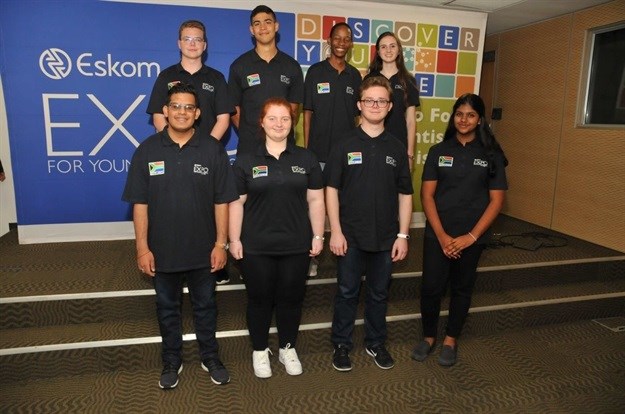






This follows the learners’ successful presentations at the 2017 Eskom Expo for Young Scientists International Science Fair. Their projects range from research into the causes of faecal and E.coli coliform in borehole water, to solutions to pain suffered due to amputated limbs.
They're competing against around 1,800 other high school students from more than 75 countries, where they will showcase their independent research at Intel and stand a chance to win some of the $4 million in prizes. Only the best young scientific minds are invited to compete and the winners can win prizes of up to R900,000.
Rahil Ishan Samlal (Grade 11 in 2017) at St Dominic’s Academy Newcastle in KwaZulu-Natal was the winner of the prestigious University of Pretoria (UP) Derek Gray Award at last year’s Eskom Expo, which includes a full bursary to study science at UP and a fully paid trip to Sweden to represent Africa at the International Youth Science Seminar to be held there in December.
Samlal will also exhibit his project, “Alternative method to cure bacterial infections” at Intel in May. “The purpose of this project was to find an alternative method to cure bacterial infections using a substance which was both cost-effective to produce as well as work as effectively to kill the pathogenic bacteria which present themselves in mainly the gut and colon,” says Samlal.
“The conclusion of the investigation was that the compound 3, 15- Dihydroxy-2-octadecene has powerful antimicrobial effects and may be used in future research when creating new antibiotics as well as other types of medications. It is easily obtainable and cost-effective,” adds Samlal.
Samlal will be joined in the US by Cape Town learner Frank Smuts (Grade 11 - 2017) who will be exhibiting his project, “Schlieren Photography – The density of the flame”, which tracks the development of a Background-Oriented Schlieren (BOS) design to measure the density of a candle flame and other axisymmetric Schlieren bodies, using a smartphone camera, a desktop computer and a printed sheet of paper.
Smuts won a gold medal at Eskom Expo for his project, was awarded the Meiring Naude Award for the most inspiring project, and won the South African Institute of Electrical Engineers (SAIEE) prestigious project award.
“The Eskom Expo for Young Scientists is not only a platform that helps us to unearth the country’s brightest young scientific minds but it also gives these youngsters the opportunity to attend prestigious international science fairs. Here they engage with other leaders in their fields, helping to broaden their horizons and showcase the exciting career options available in the sciences,” says Parthy Chetty, executive director for Eskom Expo for Young Scientists.

Other learners heading to Intel include:
For more information, visit the Eskom Expo for Young Scientists on Facebook, Twitter or at www.exposcience.co.za/